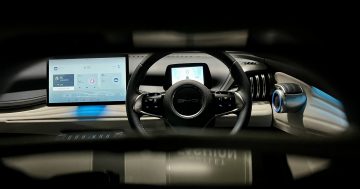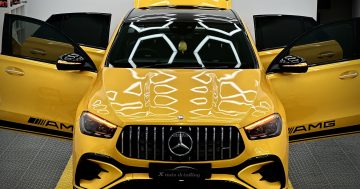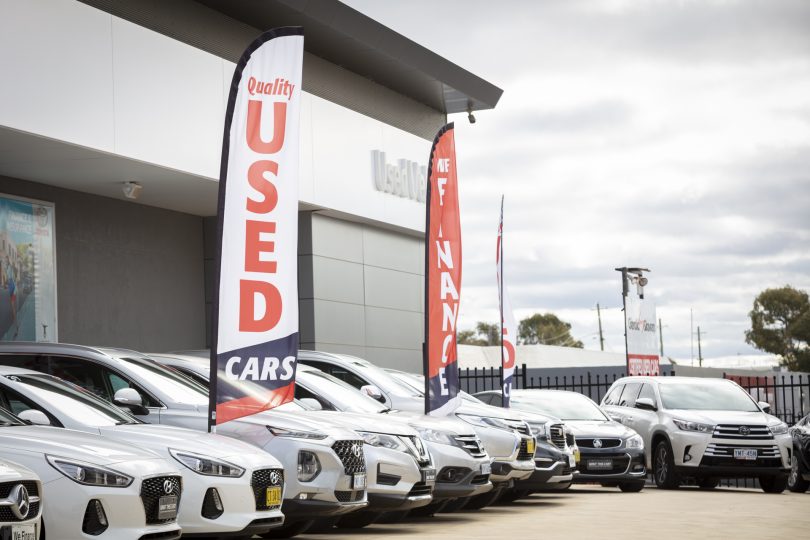
Used cars at Canberra Toyota in Belconnen. Photo: Thomas Lucraft.
If you don’t want to know how the sausage is made, don’t read the list of ingredients.
There’s no doubt ignorance can be bliss, but ignorance can also be dangerous. It’s this fear of the unknown that prompts us to investigate further in the hope we’ll get a better sausage as a result.
Well, it’s the same story when it comes to buying a car.
Often we’ll look at such things as the fuel economy, warranty and capped-price servicing schedule, and we’ll be mesmerised by the sheer size of the touchscreen and the fact it has something called ‘Active Management Assist Support Function’, whatever that is.
But how often do we consider what happens when you crash it?
The Used Car Safety Report for 2021 has been published by the Monash University in Melbourne and makes for some sobering reading.
The report cites real crash statistics from more than eight million police-reported road incidents in Australia and New Zealand to create a comprehensive score showing how well older vehicles can protect you.
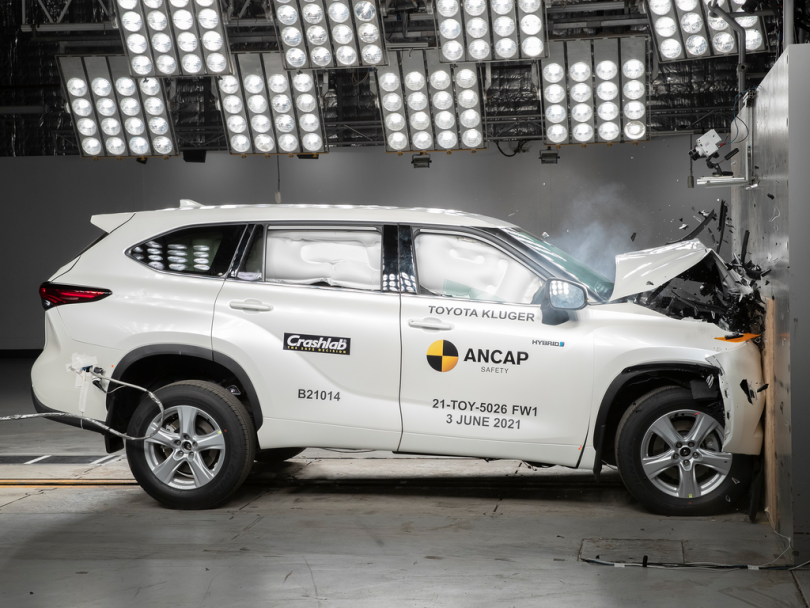
The new Toyota Kluger undergoing a frontal impact test at the ANCAP laboratory. Photo: ANCAP.
Nearly 300 different cars are categorised by model and age group and are then given a star rating for their crashworthiness, with one star being poor and five stars being named the ‘Safer Pick’.
The Safer Picks are said to provide good protection for the driver, are less likely to result in serious injuries to other drivers, pedestrians, cyclists and motorcyclists, and carry a lower risk of being involved in a crash in the first place.
The differences can have major implications.
According to Monash University Associate Professor Stuart Newstead, “A driver of the worst vehicle rated is over eight times more likely to be killed or seriously injured in the same crash than the same driver in the safest vehicle.”
It’s easy to look at the solid steel and brick-like heft of cars from the 80s and 90s and conclude that ‘she’ll be right’ in an accident. After all, it seems that the panels on modern cars bend like tinfoil if you look at them the wrong way.
Not so. Most of the vehicles in the report taking home the ‘Safer Pick’ award are those manufactured from 2008 onwards.
In fact, the average risk of death or serious injury to the driver in a crash in a vehicle manufactured in 2019 is around 47 per cent less than in a car manufactured in 2000, and 61 per cent less than in a car manufactured before 1990.
Not only are modern cars designed to bend and break in all the right places and keep the brunt of the impact away from the cabin, but they are also fitted out with a whole range of active safety systems that were largely unheard of in decades past.
Airbags, anti-lock brakes and reverse sensors and cameras have been commonplace for a while, but now you’ll also hear acronyms bandied about for autonomous emergency braking, blind-spot monitoring, electronic stability control, lane-departure warning and lane-keep assist.
It’s getting to the point where it’s theoretically impossible to crash a modern car. And if you do happen to crash, there’s a very good chance you’ll walk away.
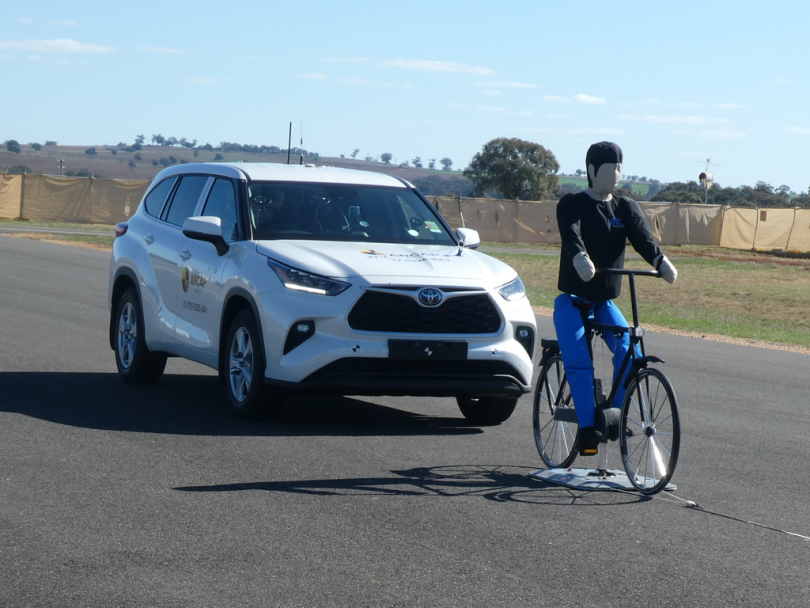
The Kluger out on the ANCAP track to test its pedestrian detection and autonomous braking systems. Photo: ANCAP.
Volvo – the brand that invented the three-point seatbelt – ruled that no one would die in one of its new cars from 2020. They’ve since conceded that “not even the Pope is infallible” and that freak accidents will continue to occur, but their intent remains the same.
Nearly every new car sold in Australia has also been put through a series of thorough and brutal crash simulations by the Australasian New Car Assessment Program (ANCAP).
The car’s collision-avoidance systems are tested out on a track before adult and child-size dummies are placed inside, and the car is slammed into a mix of poles and walls. Sensors are placed all over the car and the dummies combined with slow-motion cameras pick up every little detail about what happens.
Name any car from a respected, commonplace brand such as Volvo or Toyota and it is almost certain to have passed these tests with flying colours and received a five-star stamp.
Older sausages, not so much.
You can view the Used Car Safety Report here and check your car’s ANCAP safety score here.












